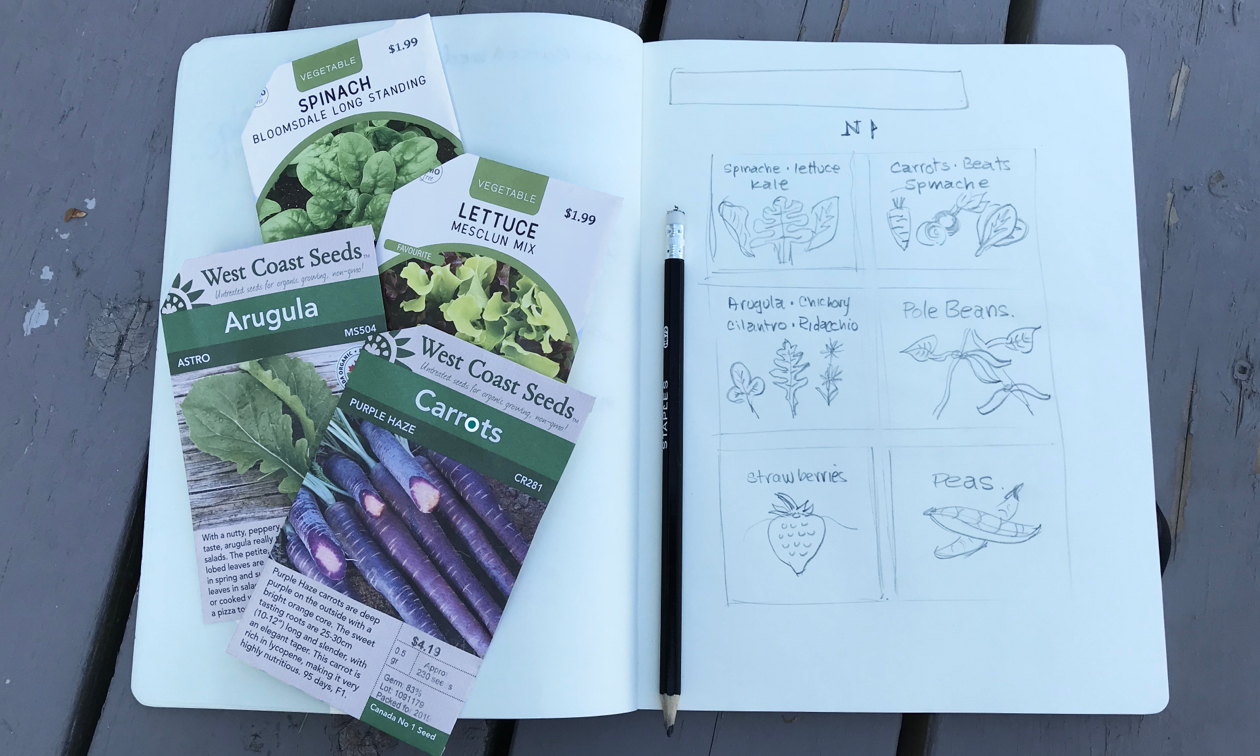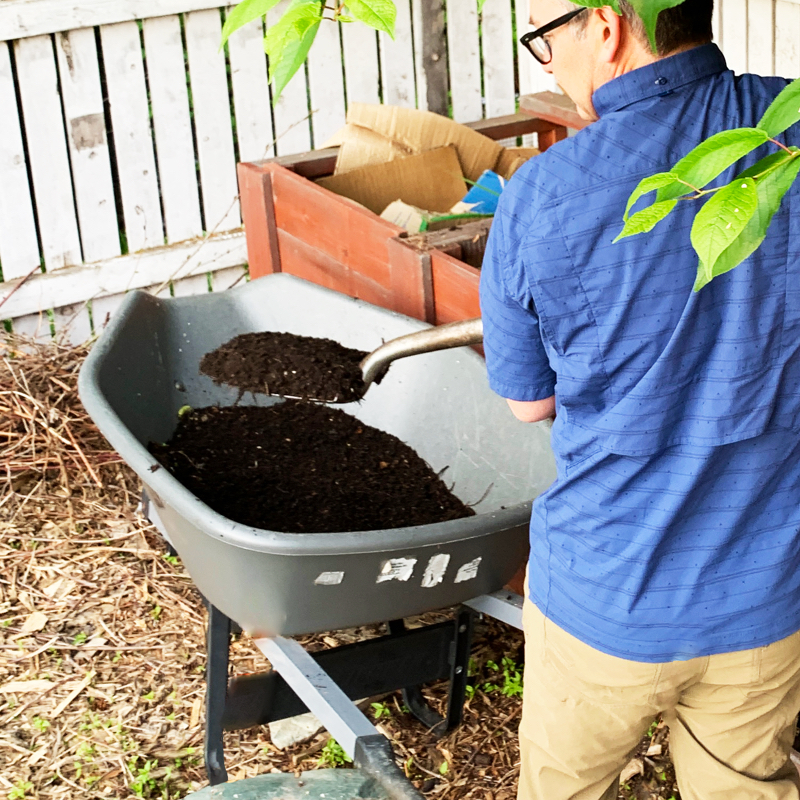10 tips for new gardeners
Are you ready to start a garden in 2021? Here are 10 tips that I wish I knew before I started my first garden

2020 was the year everyone became a gardener. That became abundantly clear when I tried to order my seeds online in early March only to be greeted with messages that said “because of increased demand our seeds are sold out.” (Note to self: remember to order seeds in January from now on.) That increased interest in growing our own food was one positive that came out of the COVID-19 pandemic and resulting lockdown.
If you are a new gardener, you will have lots of questions. I know, because I was that new gardener a little over a decade ago. Hi, my name is Kerry Shellborn, an avid amateur gardener who has a small backyard garden in the mountain community of Cranbrook, B.C. Being naturally curious, I had lots of questions about how to grow plants of all kinds. One important thing I learned was not to be put off by failure. Even master gardeners kill plants. What grows in one area may not work well in another. So if you were one of those who purchased seeds for the first time last year and discovered that not all of them grew to be vibrant healthy plants, don't get discouraged. You can succeed at growing from seed. The other thing I discovered is that plants are amazingly resilient and want to survive. Placed in the right conditions, your seeds and plants will thrive and bring you untold delight.
Without further ado, here are the top ten tips I wish I knew before I started my first garden bed:
-
Start small
-
Location, location, location
-
Purchase local seeds for taste, nutrition and success
-
Invest in raised beds for veggies
-
Don't skimp on soil
-
Start a compost pile
-
Water, water everywhere
-
Mulching every day keeps the drought away
-
Record your progress by taking lots of photos
-
Learn from other gardeners
Start small
One of the biggest mistakes new gardeners often make is to start with a garden space that is too large. Growing a few plants successfully from seed to maturity and tasting the fruits of your labour is a wonderful delight. On the other hand, taking care of a garden that is too large can quickly become overwhelming and that delight soon turns to drudgery. My recommendation: start small and plant in a location where you can view your garden from your kitchen window. That way you’ll be able to watch the amazing growth of your plants each day.
Location, location, location
One of the advantages of working from home during the summer of COVID-19 was that it gave me an opportunity to watch the sun travel over my garden daily throughout the growing season. I realized why I have such a hard time growing tomatoes—my backyard is surrounded by large trees and doesn’t get enough sunlight to grow plants that love heat and light. My tomato growing experiment illustrates the importance of getting the right location for the plants you want to grow. You can get everything else right, but if your plants aren't in the right location, your gardening efforts will be disappointing. If you are growing vegetables, the ideal location is one that gets between 10 and 12 hours of sunlight a day.

Purchase local seeds for taste, nutrition and success
Starting with the right seeds will increase your chances of success. The best seed companies to buy from are small operations that harvest seeds from plants grown in your climate and soil type. Seeds from local companies will have a better germination rate, become healthier plants and will taste better. While it may be convenient to grab a couple of seed packets from a big box store, it's well worth your time to take an extra trip to your local garden centre. There, you can ask local gardeners to point out seed companies that specialize in traditional seed varieties that will thrive in your garden.
Learn more: How to choose the best seeds for your garden
Invest in raised beds for veggies
As a rookie gardener, I was introduced to a book called All New Square Foot Gardening, which I followed almost word for word. And it worked! I was able to produce a wonderful crop of vegetables on my very first try. The reason it worked is in large part because of the recommendation to plant in raised beds. That was almost a decade ago (yes, I’m still a fairly newbie in garden years) and I still have my four original raised beds. I have adapted how I mix soil and plant, but I continue to use the basic principles behind what makes the square foot system work.
If you would like to learn more about square foot gardening, here’s a video of Mel Bartholomew, the book’s author, explaining the benefits in his own words:
Square foot gardening YouTube link: Mel Bartholomew - Introducing Square Foot Gardening
Don’t skimp on soil
Take care of your soil, and your soil will take care of your plants. Gardener Scott, a master gardener that I follow, claims that 80 per cent of problems with plants can be traced to poor soil. Speaking from personal experience, I can say that I have never had any major problems in my raised beds. I started my vegetable beds by using Mel’s Square Foot Gardening soil mixture and then I have added two to three inches of compost every fall. That simple formula has provided me with a wide variety of vegetables every growing season. Taking time to learn about soil (for example, understanding the difference between dirt and soil) will go a long way in eliminating problems—and costs—in the future.
Start a compost pile
Your garden can never have too much compost. Compost is almost always the answer to every garden question. For example: How can I improve my soil? Add compost. What should I use when transplanting perennials? Use compost. What can I use as organic fertilizer? You guessed it—compost. And the best part about compost is you can easily make it yourself for free! Compost can be made with any organic material including: kitchen scraps, coffee grounds, grass clippings, all of last year’s vegetable stalks, leaves, shredded paper and much more. Instead of sending your organic waste to the landfill, fill up your compost bins and in six to 12 months you’ll have what is affectionately known by gardeners as “black gold.”
Learn More: Composting 101: How to turn kitchen scraps into healthy compost for your garden (Part 1)
Water, water everywhere
The final ingredient to make your plants grow is water. The best tip I got about watering as a gardening newbie is also the cheapest—water by hand. That’s because it is easy to water incorrectly, either by over- or under-watering. Watering by hand allows you to observe the individual plants and learn how much water they need at each stage of their life. After you get a feel of how often plants need watering in your garden and your garden area grows, then you can invest in drip irrigation and other more expensive watering systems. The final tip that will decrease the amount of water your garden needs is to use mulch … which brings us to the next tip.
Mulching every day keeps the drought away
It took me a while to understand the need to use mulch on my garden beds. After all, every garden I had ever seen growing up had plants growing out of bare soil. Remember how we used to think that skin exposed to the sun was healthy? Now we understand the need to wear a hat and use sunscreen to protect our skin from direct sunlight. Soil, like our skin, is full of life and quickly becomes dry, cracked and lifeless when exposed to the sun. Healthy soil means healthy plants. The best sunblock for soil is two to three inches of mulch to cover all of your soil. Always having a layer of mulch will retain water like a sponge and reduce the amount of watering required. And as an extra bonus, mulch suppresses weeds. The best mulch that I use is leaves, but I have also used compost, wood chips and even pet shavings.
Record your progress by taking lots of photos
The best time to start taking photos of your garden, like planting a tree, is 20 years ago. The second best time, for both tree planting and pictures, is now. I wish I had photos of what my garden looked like 20 years ago before I began my small backyard transformation. But now, thanks to my trusty iPhone, I have started tracking my yearly garden progress through pictures. It doesn’t matter if you are a good photographer, because the act of capturing snapshots of your garden will help you see things you wouldn’t normally notice. Things like a bumblebee disappearing into the flower of a monk's hood, watching daisies follow the sun from dawn to dusk, or seeing a drop of dew suspended mid-air in the crook of a lupine. I started an Instagram channel and post a few of my garden discoveries on @mtn_garden_geek for anyone who would like to follow along.
Learn from other gardeners
There is no one “best” way to garden and there are multiple ways to achieve good results. The best teacher is experience, but the second best way to learn is to copy and learn from the experience of others. Here are three gardeners that I follow, and I have learned so much from their experiences and teaching abilities:
- Charles Dowding: The no-dig guru. Dowding runs a market garden using his no-dig method of gardening in the south of England. He doesn't just walk the walk, but also talks the talk by sharing his secrets of success on his blog, books and, my personal favourite, the Charles Dowding YouTube channel. It’s a must-watch for new and seasoned gardeners alike.
- Gardener Scott: Master gardener and teacher. Gardener Scott adds new how-to-videos every week where he shows everything you need to become a better gardener on his YouTube channel.
- Niki Jabbour: A garden writer, blogger and radio show host from Canada. Her specialty is growing in cold weather and has written several books on how to extend your growing season. You can follow Jabbour on her savvy gardening blog and YouTube.
Those are ten things that I wish I knew as a rookie gardener. Of course, each of the tips can be expanded on and I hope to do that in future columns. But what about you? Do you agree with my list? Do you have tips that you would like to share? Do you have questions about growing your garden? One of the best ways gardeners can learn and enjoy is by sharing what we know and what we would like to learn more about. I would love to hear about and see photos of your garden. Please feel free to share your tips, questions and images by emailing the Garden Geek. Perhaps I'll feature your garden in a future post.









